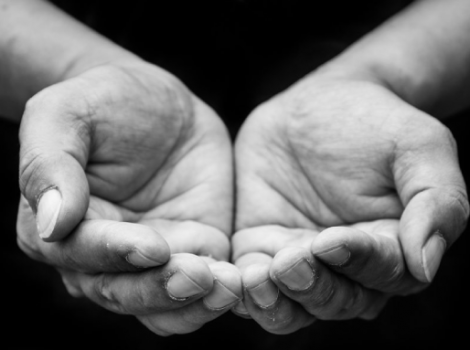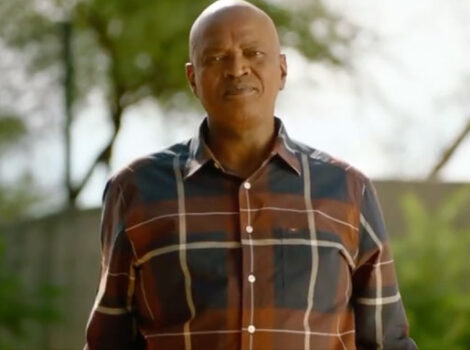
20 May 2024
Discover how the natural diamond industry helped transform the now thriving Southern African country with brilliant Botswana diamonds.
Starry night sky over the Okavango Delta in Botswana.
Transformation is a word often associated with the formation of natural diamonds. Over the course of billions of years, carbon atoms slowly formed into brilliant gems deep within the earth. For Botswana, diamonds and transformation have another poignant connection: the ability of the natural diamond trade to transform the fortunes of a country.
The history of diamonds in Botswana
Botswana, a landlocked country in Southern Africa, is both the birthplace of modern humans over 200,000 years ago and brilliant diamonds, formed billions of years before that.
The discovery of the first significant deposit of diamonds in Botswana happened in 1967, just one year after the country gained independence from Britain. At the time, it was the third poorest country in the world, with minimal infrastructure and an almost total void of formal education.
The country’s founding president, Sir Seretse Khama made it his mission to build a government with an ambitious economic development programme centred around the country’s resources.
Natural diamonds quickly became the cornerstone of Botswana’s economic development. All diamond mining in Botswana operates under a licensing agreement with the government in which 80% of diamond-related revenues are put back into the country’s economy.
Today, Botswana is now the world’s number one diamond-producing country by value. The diamond industry accounts for 30% of the country’s GDP and 80% of its exports.
The majority of the country’s diamond mines are managed by Debswana Diamond Company, a joint venture between the Botswana government and the global mining giant De Beers. (The exception is the Karowe mine at Orapa, which is operated by Lucara). Botswana mines have consistently recovered high-quality gems coveted worldwide.
In 2013, the formation of Okavango Diamond Company (ODC) marked another pivotal moment in history. Named after the lush delta and UNESCO World Heritage site, ODC is wholly owned by the Botswana government. All of ODC’s 55 employees are Batswana, and well over half are women. As Botswana’s first state-owned diamond trading company, it has empowered the nation to responsibly manage its most prized natural resource, diversifying the market and bolstering its now thriving economy and position as a global player in the industry. ODC is also deeply committed to corporate social responsibility initiatives that positively impact local communities. Through various community-focused projects, educational programmes, and job creation efforts, ODC strives to uplift and empower the people of Botswana.
Economic impact
The economic significance of Botswana’s diamond industry cannot be overestimated. Diamonds account for a staggering 80% of Botswana’s export revenue, fuelling the nation’s growth and prosperity and lifting its populace out of poverty. This revenue stream has enabled Botswana to invest in critical infrastructure, as well as education and healthcare. Much of Botswana’s 2.3 million population benefits from free education for children and universal healthcare; no small feat for a nation that was once among the poorest in the world. The diamond industry also provides direct employment to thousands and indirectly supports various sectors, from hospitality to manufacturing, making Botswana the highest per capita GDP of any continental African nation.
The heritage of the Botswana diamonds
The appeal of diamonds from Botswana is clear: A diamond from Botswana offers an origin story consumers can believe in. By centralising operations, the government ensures both transparency and maximum returns from its diamond trade, which are then reinvested in infrastructure and government programs. Simply put, a diamond from Botswana benefits the people of Botswana.
Simply put, a diamond from Botswana benefits the people of Botswana
While a full range of diamonds both industrial and gem quality come from Botswana, one treasure in particular captured international attention.
The famed Okavango Blue, mined as a 41.11 carat rough that yielded a 20.46 carat “fancy deep blue” diamond was discovered at the Orapa Mine in 2018. Owned by ODC, it is the largest and rarest blue diamond ever found in the country—its blue hue is a testament to the geological wonders of Botswana’s diamond deposits.
The dazzling and nearly flawless stone was exhibited publicly for the first time in 2022 at the American Museum of Natural History. A symbol of the rich culture of Botswana, it has inspired poets, filmmakers, and fashion designers alike. This exceptional gem not only showcases the country’s prowess in diamond mining but also its resilience and commitment to ethical practices.
Sustainability
In recent years, Botswana has made strides in ensuring the sustainability of its diamond industry. In partnership with industry stakeholders, the government has implemented rigorous environmental and social standards to minimise the industry’s ecological footprint and maximise its positive impact on local communities.
Initiatives such as community development projects and environmental conservation efforts underscore Botswana’s commitment to responsible diamond mining. One notable example of this is the rehabilitation of diamond mine sites. Upon the closure of mining operations, extensive efforts are undertaken to restore the land to its natural state, ensuring minimal long-term environmental impact. Additionally, Botswana has implemented stringent regulations and monitoring mechanisms to safeguard water resources and wildlife habitats in and around diamond mining areas.
To ensure the integrity and ethical provenance of its diamonds, ODC subjects its diamonds to rigorous certification processes from reputable third-party organisations such as the Gemological Institute of America (GIA) and Rapaport. ODC recently introduced the Green Star Source Programme, enabling the traceability of polished diamonds back to Botswana.
Diamonds meeting the stringent criteria of this programme receive the GIA Diamond Origin Report (DOR) certificate and Rapaport Green Star certification. Innovation is integral to ODC’s sustainability journey, and the organisation continually invests in research and development to continually enhance its practices. For instance, ODC is constructing a state-of-the-art facility with a rooftop and carport Photo Voltic (PV) system at its new headquarters. This solar power generation infrastructure will significantly reduce the environmental impact, covering a substantial portion of the daytime power requirements with clean energy.
Aerial view of elephants, Okavango Delta, Botswana, Africa
Botswana’s journey from a landlocked nation with a tumultuous history to a beacon of economic success is closely intertwined with its diamond legacy. Through prudent management, sustainable practices, and a deep appreciation for its natural resources, Botswana has leveraged its diamond wealth to uplift its people and secure a brilliant future. The country aspires to become not only a prominent world diamond center but also a diamond hub. While the journey is still unfolding, the origin story of Botswana diamonds is profound. A natural diamond from Botswana is not simply a precious stone. It is a symbol of transformation, progress, and human potential—sourced from where it all began.
Source: https://www.naturaldiamonds.com/responsible/brilliance-of-botswana-diamonds/



